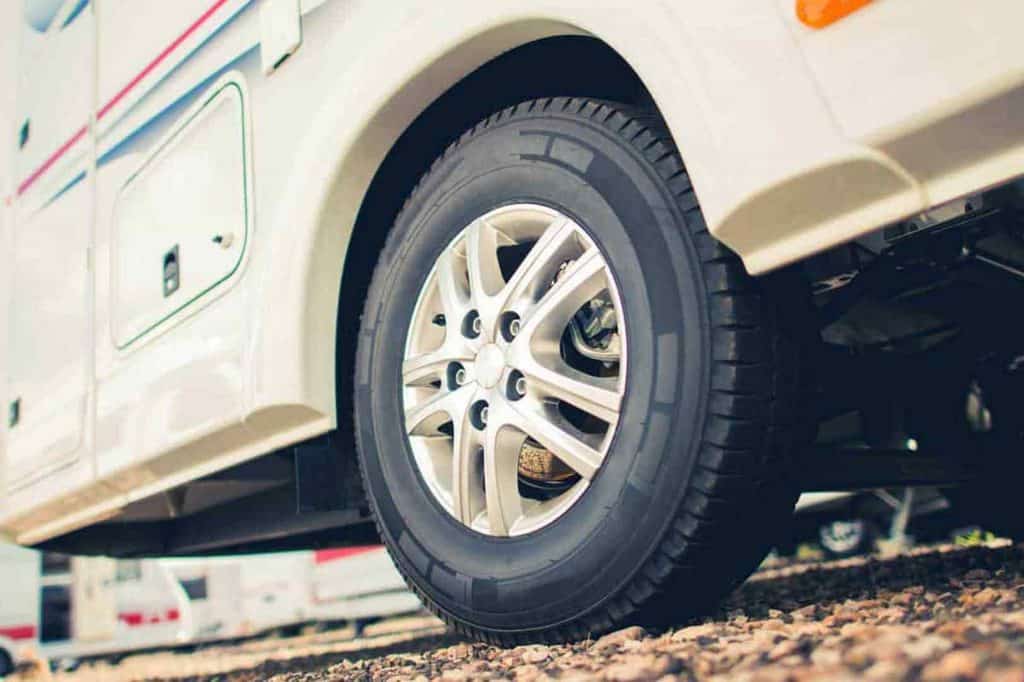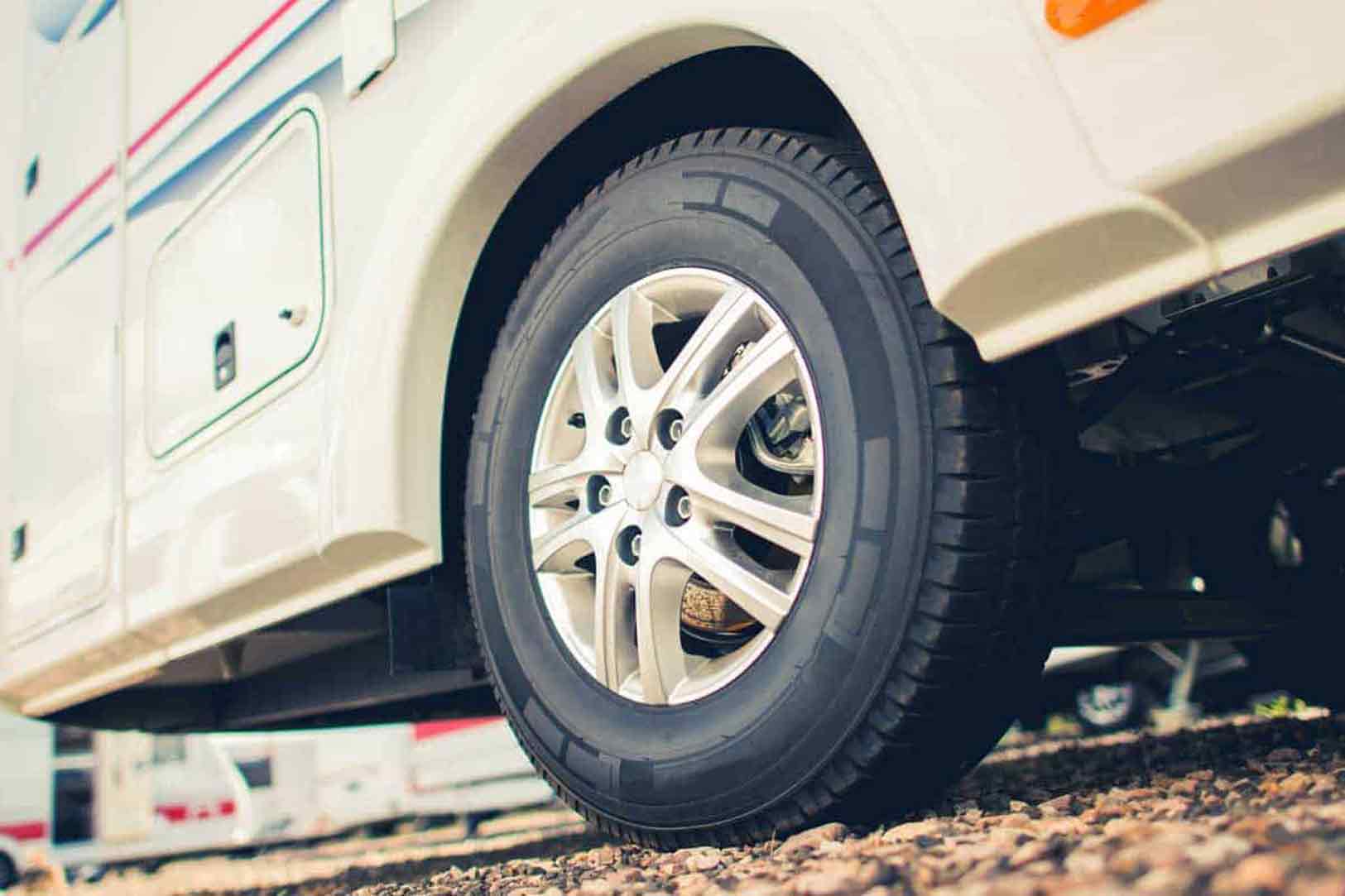Most people use their travel trailers for weekend getaways and family vacations. And if you’re like most people, you want to make sure the trip is as safe as possible. That’s why it’s crucial to maintain the proper travel trailer tire pressure. We will discuss how to do just that in this post.
We’ll provide tips on what tire pressure for travel trailer to use and tips on checking the pressure of your tires. So read on and learn how to do safe travel.
How to Maintain the Correct Travel Trailer Tire Pressure
When you’re out on the open road in your travel trailer, the last thing you want to worry about is a blown or underinflated tire.
Follow these simple RV trailer tire pressure tips for maintaining the correct camper tire pressure. Rest assured that your travels will be safe and smooth.

Inflate tires lower than the maximum limit
To start, you’ll need to know the maximum pressure limit of your trailer’s tires. This information can usually be found on the sidewall of the tire. Once you have that number, inflate the tire slightly lower than the maximum limit.
The PSI on the tire’s sidewall indicates its maximum load-carrying capacity. But you may not need that much loading power. So maxing out the pressure means overinflation, causing a bumpy ride.
It’s better to use manufacturer-recommended tires or a model having the same loading range as the trailer. The tires of most travel trailers fall between the load range of B and E, which means the tires have between 36 and 80 PSI max pressure (a chart is easy to find online). Some companies void the warranty if you don’t operate the tires at max pressure.
Follow the pressure rating on the chassis plate
Another safe way to maintain the correct travel trailer tire pressure is to follow the manufacturer’s recommended RV tire pressure chart. That tire pressure is typically stamped on the trailer’s chassis plate. Some RVs may have the number on the driver’s seat pedestal.
In this case, the manufacturer assumes the maximum load in your rig and recommends a proper tire pressure. This is the safest PSI limit for your tires if you don’t want to calculate the max pressure based on the following factors:
- The axle weight
- Maximum rig load capacity
- The actual weight of your stuff
Find the load and inflation rate for the particular tire
Suppose you have changed the travel trailer tires at some point. In that case, their maximum inflation rating won’t match what’s recommended in the user manual.
Whether you use Bridgestone or Michelin tires, find their load capacity and inflation rating from the manufacturer’s website.
Never ride the trailer with an extra load
Each travel trailer comes with a maximum load capacity, and you should never exceed that, even by a few pounds. Considering the framework’s strength and many other factors, the manufacturer has put these numbers. Carrying more weight will damage the tires, axles, and overall trailer structure.
Be careful with your packing list. Keep only the items and tools that are necessary.
Check the tires’ sidewalls
Another way to maintain the correct travel trailer tire pressure is to check the sidewall of the tires from time to time. Damage in the sidewalls can result in losing tire pressure.
Such cracks or breaks can appear because of irregular maintenance. Some RVers also don’t replace the tires at the right time. Neglecting tires’ health is quite risky because they can blow out when you are on the road. You have to spend good money on roadside assistance and repair bills if this happens.
Measure tire pressure with a gauge
Now that you have the correct pressure rating, it’s time to start adjusting your tires. The most important thing to remember is not to exceed the maximum cold inflation pressure listed on the tire sidewall or RV user manual.
Use a good-quality air gauge or an RV tire pressure monitoring system for each tire to measure the current pressure. If it’s below the recommended trailer tire pressure, add air until it reaches the correct level. If it’s above the recommended pressure, release some air until it falls within the range.
It’s also a good idea to check your tire pressure at least once a month and adjust them as needed. This will ensure that your trailer is always riding safely and smoothly.
RV tire pressure monitoring system is also a great solution which could help RV campers have real-time information about the tire pressure of every tire. To make sure it work smoothly, it’s recommended to have a technician installed it for your camper. If you’re experienced in this kind of tasks, there are a few steps to follow to add this system to your RV yourself.
Don’t forget to replace tires in time
If you travel a lot, it’s natural for the tires to undergo plenty of wear and tear. In fact, tires can deteriorate by staying idle too (for poor storage upkeep). Many RV owners don’t replace the old tires in time.
You have to detect the wear signs on the tires. If you can’t, seek professional help for a routine checkup. Also, some of them may look good on the surface, but you need to change them every 4 or 5 years. You should always follow the recommendations of the tire company.

Take proper storage care
Even the best travel trailer tires will lose their pressure and decline if you don’t take precautions before storing the trailer for an extended period. Tires exposed to harsh weather, including scorching heat, rain, and snow, will deteriorate faster. You have to keep them away from moisture and UV rays.
There are tire covers in the market, and you should invest in them to keep the tires well protected. Also, if possible, don’t keep them in direct contact with the concrete floor. Put something hardboard or thick styrofoam in between them.
Conclusion
Always consult the manufacturer’s recommended pressure chart to determine the correct travel trailer tire pressure. It’s always important to be careful about the load you carry in the trailer.
Never exceed the recommended weight to keep the tires in good health. Checking your tire pressure at least once a month is also vital to making necessary adjustments. Safe travels!

